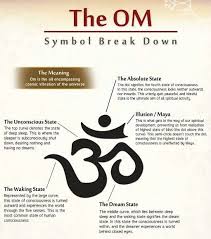
Yoga's restorative postures have many benefits. They improve circulation, strengthen bones and muscles, and enhance nerve function. It can also help relieve stress and increase feelings of well-being. These poses are especially beneficial for people suffering from sore shoulders, necks, backs, and necks. Here are some examples of restorative postures. You may want to try them for yourself, or seek the guidance of a yoga instructor.
The first pose is the "savasana". This is where you fold your body in half and place your hands and feet on the ground. The back must be straight, the chest should reach the knees, and the head should be level with the spine. To relax, you need to be able to sink into your senses. As the fascia begins to release, the muscles begin relaxing. After three to four breaths, you will notice the physical aspect of the pose begin to disappear and your body will settle into a state calm.
To do the shoulder relaxation pose, draw your shoulder blades together. With your palms facing upward, hold your torso in place using soft elbows. The blankets elevate the torso, and also serve to support the skull. Once you are comfortable with the pose, it is possible to gradually increase the length. As an additional support option, pillows or blocks can be used. For beginners, it's recommended to practice for five to ten minutes.

Props can also be used to help the body relax and open. A bolster can be placed under your pelvis to support you. Some poses require pillows or blankets to make the poses comfortable and more effective. The restorative postures help your body open up and meditate. This type of yoga is great for people with back injuries or those with chronic pain. This type of yoga is great for people who have joint problems.
You may find yoga's restorative positions to be the most effective way to ease stress and promote sleep. Props can be used if you aren’t comfortable with standing or moving. The weight of the props may make the poses difficult to hold, so use the props to support yourself in the pose. For beginners, you might try restorative Yoga to help slow down and relax.
Yoga poses that promote relaxation are called restorative yoga. You'll feel relaxed and supported in the poses. They aren't just great for sleeping. You can experience the benefits from restorative yoga at any time by using props. These poses can be done anywhere and at any time. They are great for relaxation and can also be used to promote sleep. The bolster can be used in many positions, including sitting.
Apart from using props for restorative yoga, you can do them anywhere. The primary purpose of these poses is to restore the physical body. The purpose of restorative poses is to calm the nervous system and restore balance. Focusing on the breath will allow you to relax, feel connected, and focus on your feelings. Restorative yoga has many benefits.

Props aren't the only thing you can use in restorative practice. You also need to consider the benefits that restorative pose have on your body. They can help you feel calmer after a long day at work. You may want to try them out in a gym. While these poses can help you relax and release stress, they are not meant for meditating. These poses are more for healing and overall well-being.
To increase your warmth and weight, you can also buy bolsters. Mexican blankets are a popular choice for yoga studios. You can use cork or wood blocks for restorative yoga. Boosters, which are large pillows with stiffness, can be used to support your back. They can be shaped in any way you want. Make sure you stretch your muscles and joints when you practice these poses.
FAQ
What are the best foods to avoid when trying weight loss?
Avoid trans fats. Trans fats can increase LDL (the negative) cholesterol levels and decrease HDL (the positive) cholesterol.
Trans fats are commonly found in fast food, deep-fried and packaged baked goods as well snack cakes and other processed foods.
These unhealthy fats also contribute to inflammation, leading ultimately to heart disease or diabetes.
Avoid foods containing artificial sweeteners. Artificial sweeteners are linked to an increased risk of cancer.
These chemicals can be found in soft drinks, chewing gum, and candy bars. They can also be found in other foods like meat, poultry, and eggs.
Artificial sweeteners include saccharin.
The American Heart Association recommends avoiding these chemicals because they may damage DNA in cells.
What is the best exercise for men over 40 years old?
For older men, the best workout usually gives them more energy and improves their stamina.
It is important to note that most people over 40 experience a loss of testosterone in their bodies, resulting in lower sex drive.
This doesn't mean that you shouldn't still engage in physical activity. Studies have shown that some men can get more testosterone from regular aerobic exercise.
Aerobics can be a good way to improve your sexual performance.
Which workout is the most effective for men
The answer depends on what you are looking for. If you want to lose weight, cardio workouts are great because they burn calories faster than strength training exercises.
Strength training, on the other hand, is better if you are looking to increase muscle mass.
Both types are good for improving your overall health.
If you're looking for a quick way to get fit, I recommend HIIT/sprint interval training. This type training will help you quickly lose fat by increasing your metabolism. It increases your endurance so you can continue training even when tired.
What's a good routine for a daily workout?
Regular exercise is key to staying healthy. It doesn't matter which type of fitness you choose, as long as it is done regularly. Consistency is key. It is important to stay consistent in order to get results.
Begin by walking for a few minutes each day. Gradually increase your exercise time until you are able to spend 30 minutes per day. You can choose to run, swim, weight train, do yoga or take aerobics classes.
It's important that you get your exercise done every day. You should not miss any sessions unless there is a good reason.
When exercising outside, make sure you have the right clothing and shoes. You should also consider the weather conditions that could affect your ability exercise safely.
When exercising, ensure you drink lots of water. It is best to avoid alcohol while you're exercising. Avoid caffeinated drinks, such as coffee, tea and cola. They can provide energy, but they also dehydrate.
When you first start exercising, you might feel tired after completing your workouts. But if your workouts are continued, you will feel more energetic.
Statistics
- Cardmembers earn 5% Back at Amazon.com with a Prime Credit Card. (amazon.com)
- An estimated calorie range for moderately active adult males falls between 2,200 to 2,800 calories per day, depending on age. (eatright.org)
- 10 pounds in a month is likely during a lean bulking phase, especially for beginners. (muscleandstrength.com)
- By John Thompson Take a whopping 38% off a set of PowerBlock Pros. (menshealth.com)
- Get free shipping and 25% off today. (healthline.com)
External Links
How To
How can I exercise to burn fat?
Exercise reduces calories by increasing metabolism, and oxygen consumption.
If you exercise with moderate intensity, you can safely lose weight.
These tips will help you burn fat and keep fit while exercising.
-
Cardio exercises can include running, walking, swimming or cycling.
-
Exercise for 30 minutes three times per week.
-
Add strength training to your workouts if you are looking to lose more weight.
-
Avoid doing intense exercises. You can build muscle without breaking down muscle tissue.
-
Hydrate well during exercise. Water helps flush out toxins and keep your body properly hydrated.
-
After exercising, you should drink low-fat protein drinks. Protein shakes are great for your muscles and energy.
-
So you don’t feel hungry, eat smaller meals throughout your day.
-
Don't skip breakfast! Skipping breakfast can cause you to feel tired and sluggish.
-
Take care of your mental health. Stressful situations can affect your metabolism.
-
Keep a positive attitude. Studies show that people who believe they are overweight gain more weight then those who think they are attractive.
-
Get enough sleep. A lack of sleep makes it difficult to lose fat.
-
Always be active. Be sure to get up and move around every hour or two.
-
Maintain a healthy diet. Eat right to feel satisfied and full for longer.
-
Find ways to relax. Your body won't release stress hormones that cause muscle tissue destruction if you have a tense mind.
A balanced diet includes all essential nutrients needed for growth and development.
Six small meals per day is better than three large meals. This gives your body more time to digest the food you eat.
You need about 500 milligrams of calcium daily to maintain strong bones. Calcium is available in dairy products like milk, yogurt, fortified soy beverages, orange juice, cereal, bread, and cereals.
Calcium comes from leafy green vegetables, beans, tofu, nuts, seeds, and cheese.
Vitamin D is necessary for the body to absorb calcium. Vitamin D can be found in egg yolk, fatty fish, and other fortified foods.
Vitamin E is vital for your skin's health. It can be found as a vegetable oil, wheat germ, peanuts or almonds.
Your body requires zinc for normal immune function and wound healing. Zinc is found in seafood, oysters legumes meats, whole grains, whole grains and meats.
Zinc deficiency can cause fatigue, loss of appetite, depression, and impaired immunity.
Sugar intake can lead to insulin resistance which causes blood glucose levels to rise. Insulin resistance can lead to weight gain.
Insulin resistance occurs when the bloodstream is full of free radicals. Free radicals are molecules containing unpaired electrons which cause damage to cells membranes.
Most free radicals come from pesticides herbicides, food additives, preservatives smoking, radiation, chemical in cosmetics, lotions and household cleaning supplies.
Free radical damage can lead to cancer, heart disease, diabetes, arthritis, asthma, and aging.
Antioxidants are essential for preventing free radical damage. Antioxidants protect against oxidative damage.
Vitamin C (found on citrus fruits), Beta carotene, found in carrots and sweet potatoes, spinach and broccoli, cantaloupe (found in tomatoes, mangoes and peppers), and Vitamin E (found nuts, olive oil and avocados).
Additional antioxidant nutrients include selenium and copper, manganese and zinc.
Selenium helps protect cells from oxidative damage caused by free radicals. Selenium is found in Brazil nuts, tuna, liver, kidney, shrimp, cod, turkey, beef, lamb, pork, and chicken.
Copper protects your eyes, brain, eyes and red blood cell. Copper can be found in meat, shellfish, meat, and organ meats.
Manganese, an essential component of bone strength, is crucial. Manganese is found as a component of bone structure in brown rice (spinach, bananas), prunes, raisins and oatmeal.
Zinc is necessary for average growth, reproduction, and wound healing. Zn is found in lean cuts of meat, white fish, poultry, and eggs.